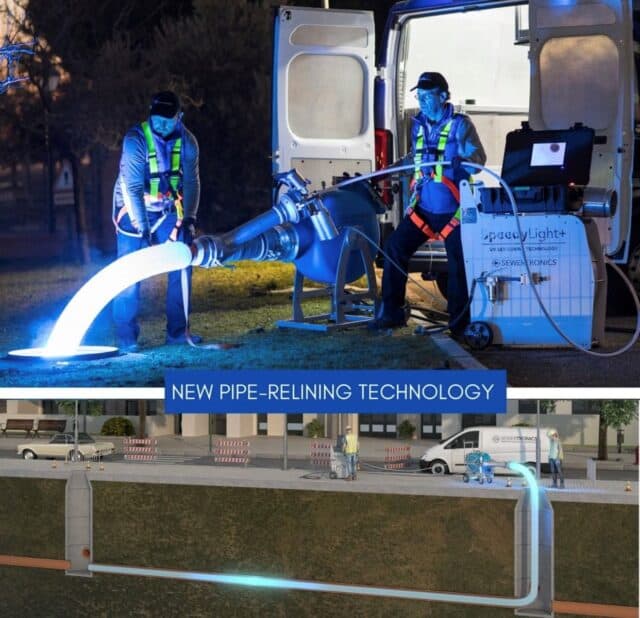Epoxy as a Solution: 5 Reasons People Choose it to Fix Cracked Pipes
Epoxy is a popular choice for repairing cracked pipes. It is a strong adhesive that can be used to fix a variety of materials, including metal, wood, and plastic. Here are five reasons why people choose epoxy to fix cracked pipes.
1. Cost-Effective
Epoxy is a cost-effective solution for repairing cracked pipes. It is much cheaper than replacing the entire pipe, and it can be used to fix a variety of different materials. Additionally, epoxy is easy to apply and does not require any special tools or equipment.
Epoxy is a popular material used for repairing cracked or damaged pipes. It is a type of resin that can be applied to the surface of the pipe to create a strong, durable seal. One of the main advantages of using epoxy for pipe repair is that it is a cost-effective solution. In many cases, it is much cheaper to repair a damaged pipe with epoxy than it is to replace the entire pipe.
Another advantage of using epoxy for pipe repair is that it can be used on a variety of different materials, including PVC, copper, and steel pipes. This makes it a versatile solution for a range of plumbing issues. Additionally, epoxy is easy to apply and does not require any special tools or equipment. The process typically involves mixing the epoxy resin and hardener together, applying it to the damaged area of the pipe, and allowing it to cure.
It is important to note that while epoxy can be an effective solution for pipe repair, it may not be suitable for all situations. For example, if a pipe is severely damaged or corroded, it may need to be replaced entirely. Additionally, it is important to ensure that the epoxy used is certified for use in plumbing applications, and that the repair is done by a qualified professional to ensure proper installation and longevity of the repair.
2. Durable
Also it is a type of adhesive that is used to repair a variety of materials, including pipes. It is made up of two parts – a resin and a hardener – that are mixed together to form a strong bond. Once applied, epoxy hardens quickly and forms a durable, waterproof seal that can withstand exposure to water, chemicals, and other elements.
When it comes to repairing cracked pipes, epoxy is a cost-effective solution that can save you time and money compared to replacing the entire pipe. It can be applied to a variety of materials, including metal, plastic, and concrete, making it a versatile option for many different types of pipes. In addition, epoxy is easy to apply and does not require any special tools or equipment, making it a convenient choice for both professionals and DIY enthusiasts.
One of the biggest advantages of using epoxy to repair pipes is its durability. Epoxy is resistant to corrosion, which can be a major problem for pipes that are exposed to water or other corrosive materials. Additionally, it is waterproof, which helps prevent leaks and other types of water damage. Its strength also allows it to support the weight of the pipe and any contents that may be flowing through it, ensuring that the repaired pipe can continue to function effectively.
Overall, epoxy is a reliable and durable solution for repairing cracked pipes. Its ease of application, versatility, and resistance to various elements make it a popular choice for both homeowners and professionals.
3. Quick and Easy
It is a convenient solution for fixing cracked pipes as it doesn’t require a lot of time or effort to apply. It can be easily mixed and applied to the affected area using a putty knife or similar tool. The epoxy will quickly harden and form a strong bond, sealing the crack and preventing any leaks. Furthermore, epoxy is a versatile material that can be used to repair a wide range of pipe materials, including metal, PVC, and even concrete. This makes it an ideal solution for a variety of plumbing repair needs. Additionally, because epoxy is easy to use and doesn’t require any special tools or equipment, it can save homeowners time and money on repairs.
4. Non-Toxic

The epoxy material is also considered to be a safe material to use for repairing cracked pipes as it is non-toxic and does not contain any harmful chemicals or materials.
This makes it an eco-friendly option as well. Moreover, since it does not emit any fumes or harmful substances, it can be safely used around the home. In case of any accidental spills or leaks, it can be easily cleaned up with water or a mild detergent, without leaving any residue behind. Therefore, epoxy is a reliable and safe option for repairing cracked pipes.
5. Versatile
Epoxy is a type of adhesive that is known for its versatility and strength. It can be used to fix a variety of different materials, including metal, wood, and plastic pipes. This versatility makes it an ideal choice for repairing cracked pipes, as it can be used on a variety of materials commonly found in plumbing systems.
In addition to being versatile, epoxy is also known for its strength. Once it hardens, it forms a strong bond with the material it is applied to. This makes it an effective solution for repairing cracks in pipes, as it can create a durable seal that can withstand the pressure of water flowing through the pipe.
Furthermore, epoxy is easy to apply and does not require any special tools or equipment. It can be applied in minutes and will quickly form a strong bond, allowing you to quickly fix any cracks or leaks in your pipes. Additionally, epoxy is non-toxic and safe to use around the home, making it an ideal choice for DIY repairs.
Overall, epoxy is a versatile, strong, and easy-to-use material that is a cost-effective solution for repairing cracked pipes. Its ability to bond with a variety of materials, along with its strength and ease of use, make it a popular choice among homeowners and professional plumbers alike.
Summing Up
Frequently Asked Questions
Pipe relining is a trenchless pipe repair method that uses a resin lining to fix pipes. The existing pipe is cleaned and inspected, then lined with a resin material that’s cured to form a new pipe within the old pipe. With Streamline Pipes, you can expect 60 years of service life out of your relined pipes! If your pipe has collapsed partially, we can reline it. If the sewer or stormwater pipe is fully collapsed then this will require, digging and a pipe replacement, to fix it correctly and costs more in labour. The pipe is impregnated with an epoxy Liner. Once cured, this creates a ‘new pipe, within the old pipe’. Very similar to a medical ‘stent’. The benefits of using pipe relining for a cracked or partially collapsed pipe include: It depends on many factors, including the size of the pipe and the access to this pipe. In most cases, your pipe can be relined in a few hours. If you need the work done as a matter of urgency then StreamlinePipes can be there the next day after the quote is provided. Pipe relining is a long-term solution. The pipe lining can last just the same if not longer than replacing in with a new PVC Pipe. Once it is in place you don’t have to worry about repairing or replacing it for years. Relined pipes are more cost-effective than replacement of the entire pipe, which can be very expensive. Relining leaves your property intact, so there’s no need to dig up your yard or pathways or remove any landscaping features. You won’t even notice when our qualified plumbers are onsite! StreamlinePipe relining saves money in the long run because: Cured-In-Place-Piping (CIPP) relining is a method of repairing pipes that involves injecting a high-density polyurethane material into the pipe. The material hardens and forms a new pipe within the old pipe. This method of pipe repair was pioneered by Streamline Pipes and Drains over 31 years ago. If you are unsure whether your pipes need to be relined or repaired, contact us for a free, no-obligation inspection. We can help you to evaluate the condition of the pipes and advise you on all available options, contact us for help. Absolutely. Pipe relining requires specific equipment and training. The no-dig pipe repair solution is not taught at Tafe. Relining training is learnt ‘on the job’ and can take decades to perfect. It is worth thinking ‘will the plumbing company be around for 2o years to fix any possible problems”? There are many companies out there claiming to be able to do this work effectively, but no one can match the quality and expertise of Streamline Pipes and Drains as they are only just beginning and Streamline has be Relining for over 31 years. Yes, pipe relining is approved by Australian standards. In fact, AS3600 (2016) and its subsequent revisions include requirements for the use of pipe relining as a method of remediation in both stormwater and sewer systems. AS3600 is a set of standards for stormwater and wastewater systems that have been developed under the auspices of Standards Australia New Zealand (Standards NZ). The following standards apply: Root intrusion is the result of tree roots growing into the pipes. Pipe relining is a perfect preventative solution when roots have invaded your sewer pipes, as the use of a High-Pressure Water Jet and inspection camera, is the precursor work required in order to clean and clear the blockage. Once this is done, then the StreamlinePipes relining system is able to install the pipe liner and get your pipes working again, with tree roots permanently removed from that part of the drain system.
What Is Pipe Relining?
If The Pipe Has Collapsed Can It Be Relined?
How Long Does Pipe Relining Take?
How Long Does Pipe Relining Last?
How Does CIPP Relining Work?
How Do I Know If My Pipes Are Blocked Or Broken?
Does Pipe Relining Need To Be Done By A Specialist?
Is pipe relining approved by Australian standards?
Can Root Intrusion Be Fixed With Pipe Relining?
- Why Brawoliner is the Best in Pipe Relining Business - August 4, 2025
- Aftercare of Pipe Relining: How Hard is it Really? - August 4, 2025
- Revitalizing Your Sewer Pipes: How Sewer Pipe Relining Works - August 4, 2025





